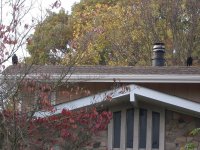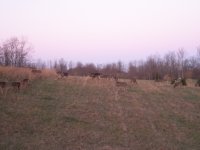Walking my goofy dog through the neighborhood this morning, I got to looking and thinking about roofs, the vast majority of them being a dark brown color. Why especially here, where it gets really hot in the summer, are there not more in a lighter color?
I have seen light color roofs and they look good to me, and I'm sure they reflect the heat much better than a dark color.
Do lighter roofs have a reputation for getting dirty looking after a time? If so, maybe a light brown would be a better choice?
I have seen light color roofs and they look good to me, and I'm sure they reflect the heat much better than a dark color.
Do lighter roofs have a reputation for getting dirty looking after a time? If so, maybe a light brown would be a better choice?
Last edited:




